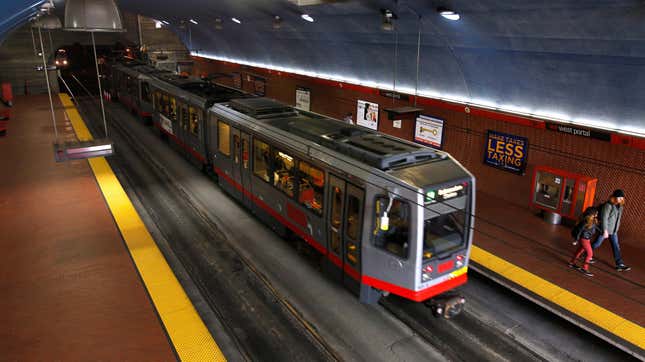
The only thing that ages worse than integral computer technology is milk. The San Francisco Municipal Transportation Agency board approved a $212 million contract earlier this month to develop a new control system for the Muni Metro light rail trains by 2028. The new system will replace the original 1998 system, which requires three floppy disks to function on DOS. Yes, DOS.
Hitachi Rail, a manufacturer of Japan’s Shinkansen trains, was awarded the contract to provide a new state-of-the-art control system and support services for up to 25 years. The current system allows for automated control while trains are running in the subway. The three 5.25-inch floppy disks are used to load DOS software controlling the system’s central servers, according to Ars Technica. However, the light rail trains must be manually controlled once they hit the surface streets. SFMTA describes the system as antiquated and fragile:
The Automatic Train Control System is designed to communicate with Muni Metro trains along loop cable signal wires – a type of wireless technology from the 1980s. This technology transmits data slower than a dial up modem and has less power than a modern cell phone. So, the bandwidth and range of communication are low, the system can only transmit limited information and the software still runs on floppy disks.
The loop cable is also fragile and easily disturbed. This makes subway maintenance more difficult. It also means the system cannot be extended outside the subway, along on-street Metro corridors, where currently we don’t have automatic train control.
The Muni Metro isn’t the only floppy disk holdout. British Airways and a few other airlines that operate the Boeing 747-400 still update the aging jumbo jet’s avionics software using 3.5-inch floppy disks. The aircraft’s navigation database needs to be updated every 28 days, according to the Verge. Floppy disks may have been at the forefront of digital storage in the 1980s, but the format has been replaced multiple times over by 2024.

